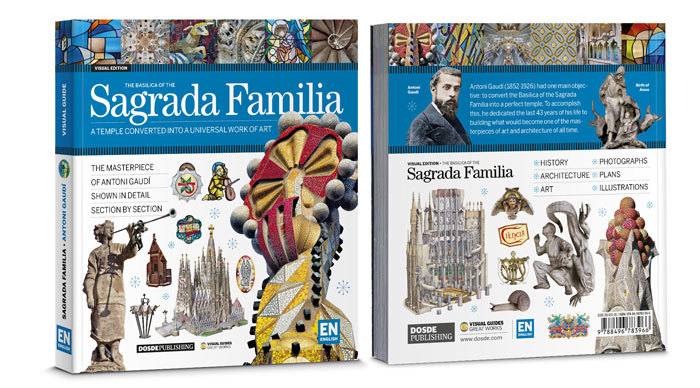The construction of the Temple of the Sagrada Familia started in 1882 on a site in Barcelona’s new Eixample.
Devised to be the highest construction in the City of Barcelona, Antoni Gaudí –inspired by the height and monumentality of Gothic temples- provides the Basilica of the Sagrada Familia with eighteen colossal towers that succeed in linking the earthly with the heavenly.
1. WHY WAS IT BUILT?
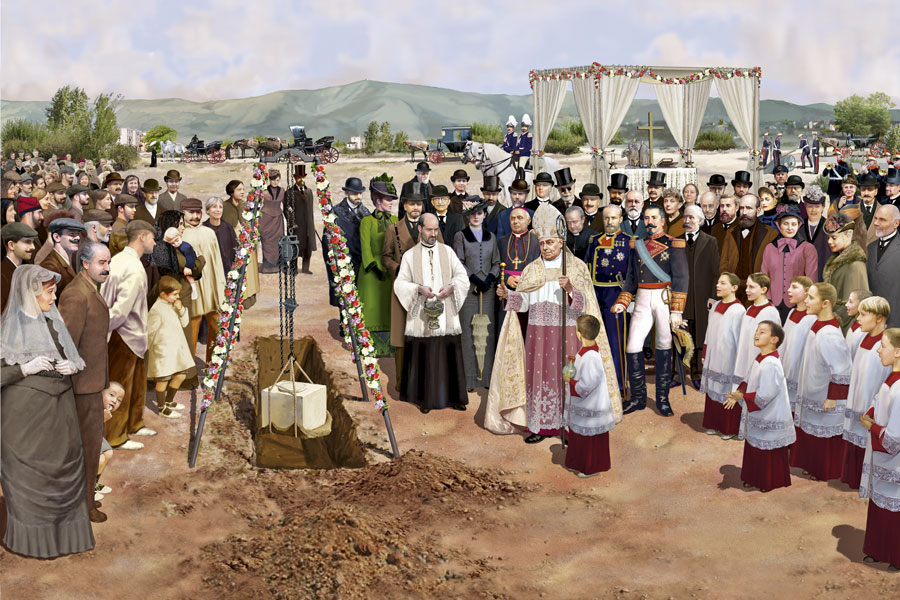
A section of Spanish society had to undergo a radical change in habits brought about by the Industrial Revolution and by the consequent shift from eminently rural customs to a new urban lifestyle. This process brought with it a spiritual crisis that the Spanish clergy combatted with the fevered missionary activity of numerous ecclesiastics of the time, determined to recuperate the lost faith of millions of citizens.
The foundation in 1866 of the Association of Devotees of Saint Joseph was part of this reaction by the Church to recover its spiritual influence on society. The fact that by 1878 the association already had half a million members encouraged its creator, bookseller and philanthropist Josep Maria Bocabella, to take up the construction of an expiatory temple dedicated to the Holy Family, subsidised by worshippers’ donations.
2. GAUDÍ WASN’T THE FIRST ARCHITECT
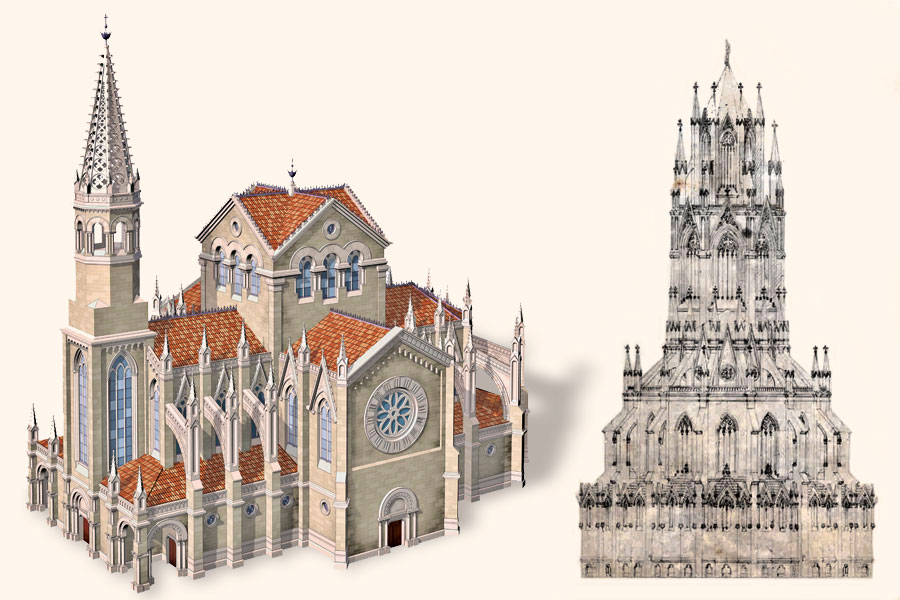
Josep Maria Bocabella commissioned the construction project of the Expiatory temple of Sagrada Familia to Francisco de Paula del Villar, the diocesan architect, who had offered his services free of charge.
In 1883, just a year after the start of the building work, Del Villar resigned from managing the project due to differences with Bocabella and his main consultant, the historicist architect Joan Martorell.
Following Del Villar’s resignation, Bocabella offered the management of the building work to Joan Martorell, his consultant, but the latter declined and recommended his most talented disciple: an architect aged 31 called Gaudí.
3. GAUDÍ DIRECTED THE WORK FOR 43 YEARS
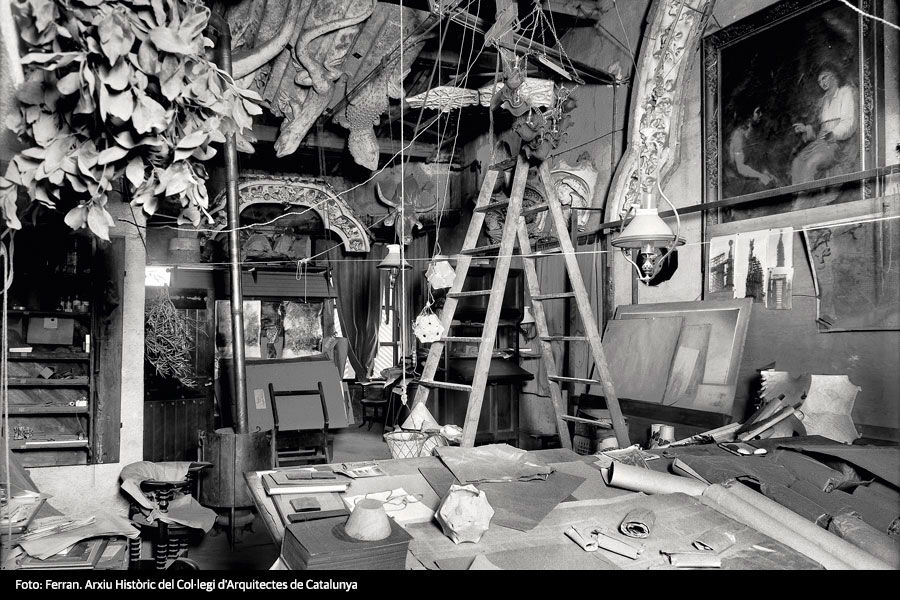
The architect took charge of the construction project of the Sagrada Familia in the year 1883 and was its director for forty-three years, up until his death in 1926.
Gaudí took charge of the building work in 1883 and combined the temple’s construction with his other projects, until the year 1914 when he decided not to take on any more commissions and to dedicate himself exclusively –up to his death in the year 1926– to the Basilica of the Sagrada Familia.
These forty-three years enabled the architect to understand that his project was able to achieve what for centuries other architects before him had not managed: to construct a perfect temple.
4. WHY DOES LA SAGRADA FAMILIA MEASURE 172.5 METRES HIGH?
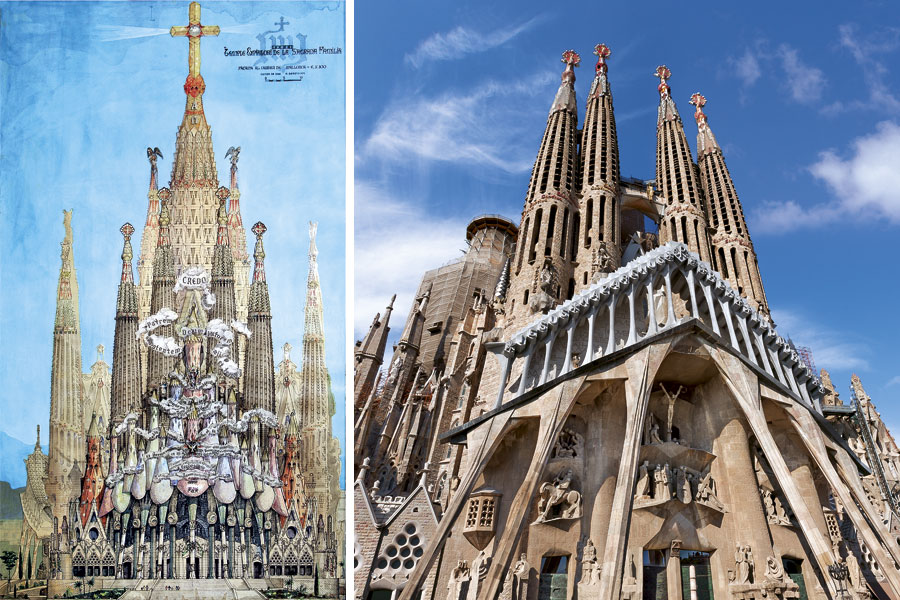
Gaudí sought to make Sagrada Familia a link between heaven and earth, recuperating the hunger for verticality that medieval cathedrals had pursued.
He wanted to erect the highest building in Barcelona and devised Jesus’ cimborio –an element topping the basilica at 172.5 metres high– to tower over all other civil constructions in the city, whilst at the same time preventing a work carried out by Man from exceeding a work created by God, and for this reason he kept it lower than Barcelona’s mountain, Montjuïc.
5. WHO WAS THE REALISM OF THE SCULPTURES ACHIEVED?
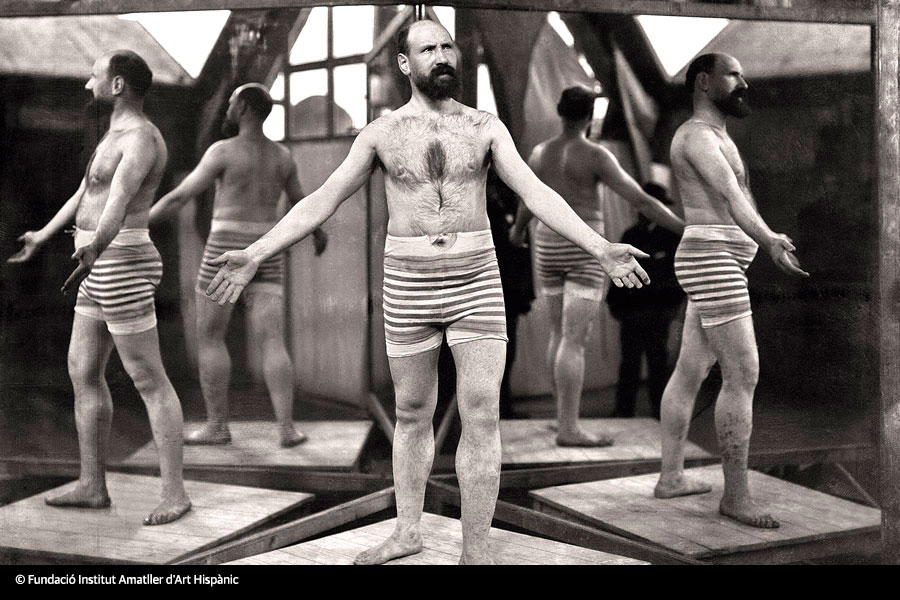
In order that the sculptures’ gestures could be as realistic as possible, Gaudí used people, dolls and even skeletons as models, which he had photos taken of to serve as inspiration for the sculptors.
Llorenç Matamala was in charge of the temple’s sculptors and creator of many of the facade’s sculptural groups, such as the Trumpeteering Angels, the Death of the Innocents, the Flight to Egypt or the Immaculate Conception..
6. WHY ARE THEIR TREE-LIKE COLUMNS INSIDE THE SAGRADA FAMILIA?
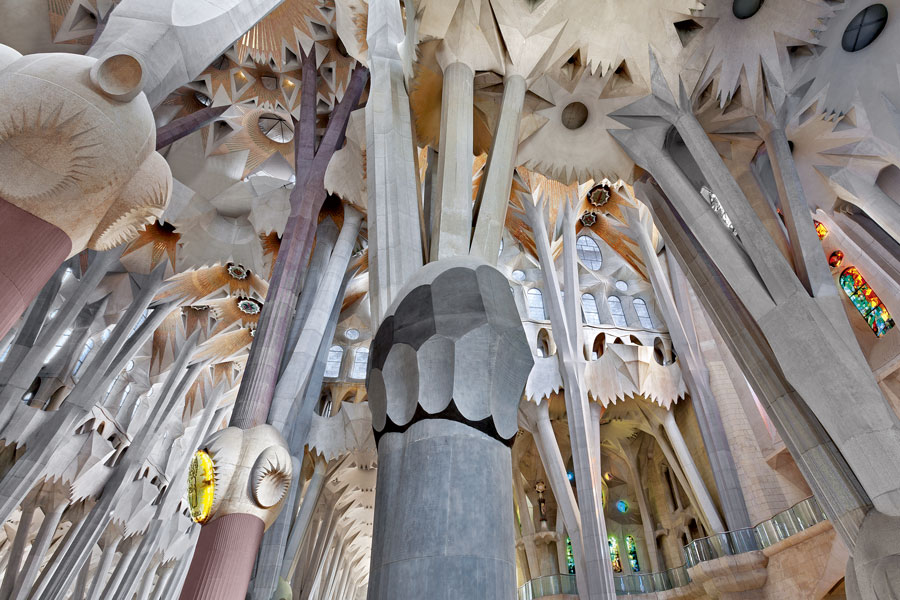
Gaudí proposed for Sagrada Familia the reinterpretation of the Gothic style as a necessary concept in order to establish a close relationship between heaven and earth by means of height and light. To achieve this, large windows had to be included which subsequently meant that walls could not be load-bearing.
This was how the architect came up –after many years of study– with the solution of tree-like columns, an avant-garde system that had never been used up to that time, where loads could be transferred down to the floor by means of the branching out of columns.
7. GAUDÍ WAS DEVOTED TO THE VIRGIN MARY
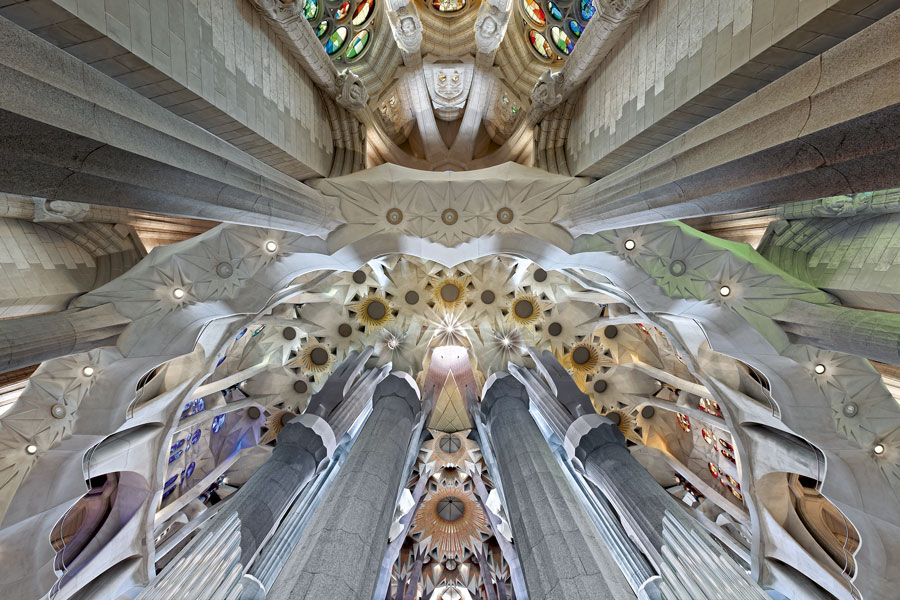
The Christian faith of Antoni Gaudí grew in an exponential way during the forty-three years he was at the helm of the building work on the Sagrada Familia. Actually, from a very early age he had already professed a fervent devotion to the Virgin Mary.
Imbued by this existing devotion to the Virgin in Europe and by his own Marian convictions, Gaudí decided to dedicate the entire arrangement of constructions on the apse’s façade –Mary’s tower, the apse and the Assumption Chapel– to Jesus’ mother.
As a counterpoint, he dedicated the seven interior chapels of the temple’s chevet to the Sorrows and Joys of Saint Joseph by express wish of Josep Maria Bocabella, developer of the work.
8. THE APSE IS FULL OF REPTILE SCULPTURES
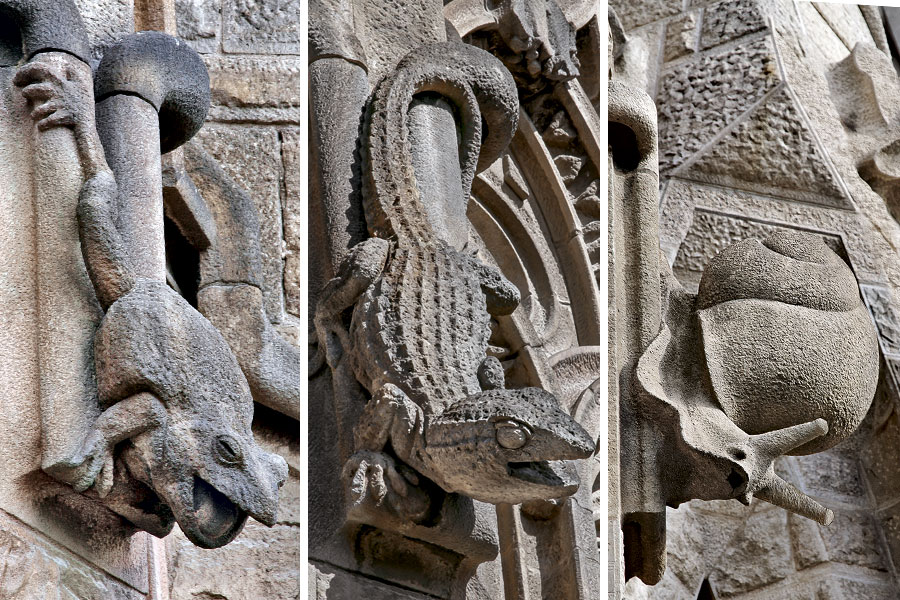
With a symbolic and decorative proposal that was quite daring for the religious customs prevalent in the late 19th century, the architect had numerous sculptures of reptiles, amphibians and species from far off lands put into place on the exterior walls of the apse, creatures which at the time were deemed to be of lower rank.
They carry out a triple function: decorative; functional, for their use, such as the gargoyles, to drain rainwater from the temple roofs; and symbolic, given that they were beings associated with evil since ancient times that, positioned head down, flee from the mystic power of the symbols that top the towers representing Jesus and they seem to wander around the façade, with no possibility of entering the temple.
9. A NOISE-PROOF CLOISTER
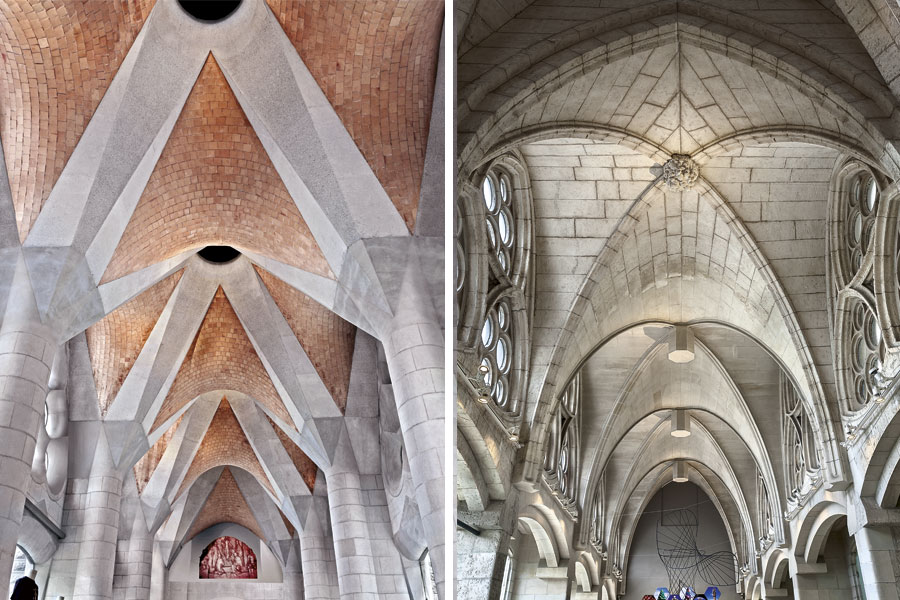
Gaudí revolutionises the concept of the cloister in order to add new utilities to its traditional purpose: to reduce the noise that came from the street and to allow the holding of processions down its arcaded corridors.
The architect designed the cloister of the Sagrada Familia as an arcaded, rectangular passageway whose four sides correspond to the four façades.
Despite being an enclosed space, and despite the absence of a garden, the natural illumination of the arcaded corridor designed by Gaudí is assured thanks to the windows and rose windows that overlook the exterior in each one of the modules.
10. SOME SCULPTURES WERE DONE BY GAUDÍ HIMSELF
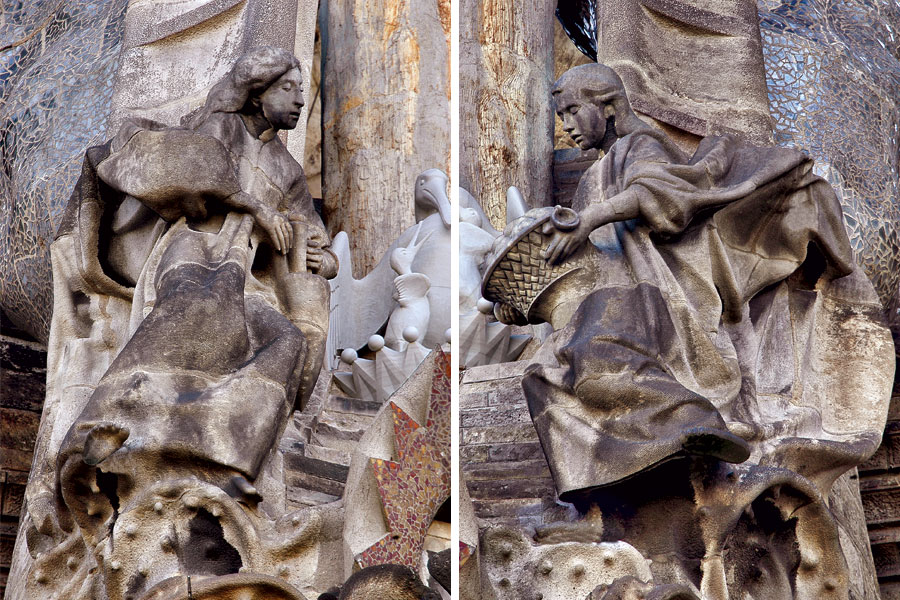
Gaudí reserved the top part of the pórtico for the representation of the Tree of Life.
The architect had the top of the tree sculpture (a cypress), decorated with 21 white alabaster doves and a pelican feeding her offspring, a eucharist symbol.
At the foot of the Tree of Life are sculptures of angels carrying bread and wine, one of the few sculptural arrangements modelled by Gaudí himself.
The best book to discover the Sagrada Familia
The Sagrada Familia is Antoni Gaudí’s masterpiece, which he dedicated forty-three years of his life to and never saw finished. Entering the Sagrada Familia is entering Gaudí’s very own special universe.
This book tells you all you need to know about the Sagrada Familia. More than 700 pictures including photographs, drawings, plans and illustrations. Gaudí’s major work seen as never before.


